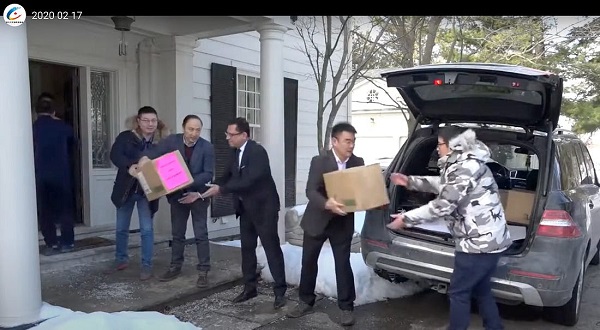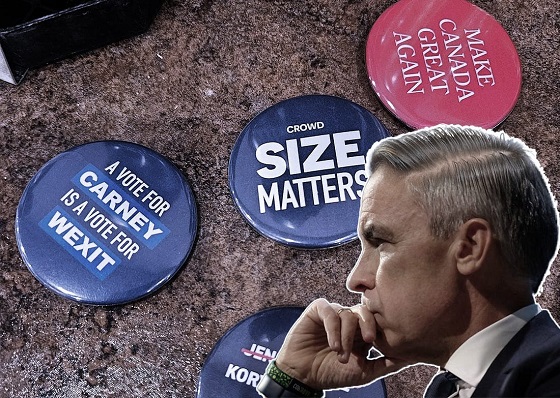Alberta
Vaccine mandate and province-wide restrictions
New vaccine requirements and COVID-19 measures in Alberta
Alberta has declared a state of public health emergency and will implement new health measures to expand capacity, increase vaccination rates and reduce transmission of COVID-19.
New temporary health measures to help slow the spread of COVID-19 will apply provincewide. This includes new restrictions on restaurants, indoor gatherings, weddings and funerals, retail, entertainment venues, and indoor sport and fitness beginning Sept. 20. Measures in workplaces, indoor private gatherings, places of worship, schools and children’s activities, as well as mandatory masking and physical distancing in all indoor public spaces begin Sept. 16.
Starting Sept. 20, businesses or event organizers who choose to implement a program checking patrons for government-issued proof of vaccination or a recent negative privately purchased COVID-19 test will be able to have an exemption to restrictions. If a business or service chooses not to require proof of vaccination, they will be required to adhere to the new health measures.
“We are taking necessary and critical steps to prevent our health system from being overwhelmed and once again slow the spread of COVID-19 in Alberta. These steps are not easy for anyone, but with COVID-19 hospitalizations continuing to rise, particularly amongst the unvaccinated, we have no choice but to implement the proof of vaccination measures and temporary restrictions. We have overcome past COVID-19 waves and we will once again. I strongly urge anyone who has not yet been vaccinated to do so immediately. Please protect yourself, your loved ones and your community.”
“The new proof of vaccination requirements will make us all safer. This will help increase vaccination rates across the province and protect Albertans in settings that pose a higher risk of transmission. We’ve seen from other jurisdictions that proof of vaccinations do help encourage people to get vaccinated, and I am calling on every eligible Albertan to get fully immunized as soon as possible.”
“I know Albertans, especially those who have done everything they can to keep not only themselves but their fellow Albertans safe, are tired. But I’m asking you to please continue to do the right thing to help protect our health-care system and our communities. Please continue to make safe choices, get vaccinated if you haven’t already, wash hands and stay home when ill. Together, we will protect our health system and each other.”
New public health measures provincewide
The following measures will take effect on Sept. 16:
Workplaces:
- Mandatory work-from-home measures are in place unless the employer has determined a physical presence is required for operational effectiveness.
Private social gatherings:
- Indoor private gatherings for vaccine-eligible, fully vaccinated individuals are limited to a single household plus one other household to a maximum of 10 people, with no restrictions on children under the age of 12.
- Attendance at any indoor private social gathering is not permitted for vaccine-eligible individuals who are unvaccinated.
- Outdoor private social gatherings are permitted to a maximum of 200 people, with two-metre physical distancing maintained at all times.
Places of worship:
- Places of worship must limit attendance to one-third fire code capacity.
- Face masks will be mandatory and there must be two-metre physical distancing between households or two close contacts for those living alone.
Outdoor events and facilities with no indoor portion (excluding washrooms):
- No attendance restrictions, however two-metre physical distancing must be in place.
Schools (K-12):
- Mandatory masking for students in grades 4 and up, plus staff and teachers in all grades. Schools that can implement an alternate COVID safety plan can be exempted from mandatory masking.
- Elementary schools are to implement class cohorting.
- For physical activities in schools:
- Youth aged 18 and under are not required to mask or maintain two-metre distance when engaged in physical activity.
- There are no restrictions on outdoor activities.
- Indoor sports/performance/recreation/
special interests are permitted with requirements for two-metre physical distancing, where possible.
Children’s sport/performance/recreation (extracurricular sports, performance, recreation and special interest):
- Indoor activities are permitted, with requirements for two-metre physical distancing and masking where possible, and symptom screening for participants.
- Youth aged 18 and under are not required to mask or maintain physical distancing during a physical activity, such as a team sport.
- Spectator attendance is limited to one-third fire code capacity. Attendees must be masked and ensure physical distancing between different households or an individual who lives alone and their two close contacts.
- There are no restrictions on outdoor activities.
Children’s activities:
- Children’s day camps must have two-metre physical distancing between participants and masking indoors.
- Children’s overnight camps must follow cohort models.
The following measures will take effect on Sept. 20:
Restaurants:
- Outdoor dining only with a maximum of six individuals per table (one household or two close contacts for those living alone).
- Liquor sales and consumption restrictions (10 p.m. sales and 11 p.m. consumption) apply.
- Restaurants are eligible to implement the Restrictions Exemption Program.
Weddings and funerals:
- All indoor ceremonies and services are limited to 50 attendees or 50 per cent fire code capacity, whichever is less.
- No indoor receptions are permitted.
- The hosting facility would be eligible to implement the Restrictions Exemption Program.
- All outdoor ceremonies and services for weddings and funerals must be limited to 200 attendees. Outdoor receptions are required to follow liquor sales and consumption restrictions (i.e., sales end at 10 p.m. and consumption ends by 11 p.m.).
- The hosting facility would be eligible to implement the Restrictions Exemption Program.
Retail, entertainment and recreation facilities (includes any indoor venues, libraries, conferences, rental spaces, concerts, nightclubs, casinos and similar):
- Attendance is limited to one-third fire code capacity and attendees are only permitted to attend with their household or two close contacts for those living alone. Attendees must be masked and have two-metre physical distancing between households.
- These facilities are eligible to implement the Restrictions Exemption Program.
Adult (over 18 years old) sport, fitness, performance, and recreation:
- Indoor activities:
- No indoor group classes or activities are permitted.
- One-on-one training or individual workouts are permitted but three-metre physical distancing is required.
- No contact between players; indoor competitions are paused except where vaccine exemptions have been granted.
- These facilities and programs are eligible to implement the Restrictions Exemption Program. Specific exemptions may also be granted on a case-by-case basis.
- There are no restrictions on outdoor activities.
Restrictions Exemption Program
- Starting Sept. 20, vaccine-eligible individuals will be required to provide government-issued proof of immunization or a negative privately paid COVID-19 test from within the previous 72 hours to access a variety of participating social, recreational and discretionary events and businesses throughout the province.
- To enter certain spaces that are participating in the program, including restaurants, bars and indoor organized events, people aged 12 and older will be required to show their proof of vaccination or a negative recent test result.
- Businesses that implement the Restrictions Exemption Program would operate as usual, provided they are serving only people who have proof of immunization or who have a recent privately paid negative test, as per the requirements in place. This means they could immediately and without restriction serve any individual eligible for vaccination who:
- Has proof of double vaccination (note that for a transitional period between Sept. 20 and Oct. 25, proof of a single dose would be considered acceptable as long as the dose was given two weeks or more before the time of service).
- Has documentation of a medical exemption.
- Has proof of a recent (within the previous 72 hours) negative COVID-19 test (either PCR or Rapid Test). The test may not be from Alberta Health Services or Alberta Precision Laboratories.
- Those under age 12 would not need to provide proof of immunization or a negative test to enter a participating business.
- This program would not apply to businesses or entities that need to be accessed for daily living.
- Albertans can access copies of their COVID-19 vaccination records through MyHealth Records. For the time being, Albertans should avoid logging into MyHealth Records to download their records. The printable card, which was going to be made available on Sept. 16, will now be available on Sept. 19.
Get fully vaccinated
More than 79.5 per cent of eligible Albertans are now protected with at least one dose of COVID-19 vaccine and 71.4 per cent are fully vaccinated. Vaccines dramatically reduce the risk of severe outcomes and the risk of infection.
Vaccines are the most powerful tool in the fight against COVID-19. Vaccine appointments are widely available through AHS or participating pharmacies and physician clinics. Book yours at alberta.ca/vaccine. First doses are also available at select walk-in clinic locations. Two doses provide maximum effectiveness and long-lasting protection.
Alberta
Made in Alberta! Province makes it easier to support local products with Buy Local program

Show your Alberta side. Buy Local. |
When the going gets tough, Albertans stick together. That’s why Alberta’s government is launching a new campaign to benefit hard-working Albertans.
Global uncertainty is threatening the livelihoods of hard-working Alberta farmers, ranchers, processors and their families. The ‘Buy Local’ campaign, recently launched by Alberta’s government, encourages consumers to eat, drink and buy local to show our unified support for the province’s agriculture and food industry.
The government’s ‘Buy Local’ campaign encourages consumers to buy products from Alberta’s hard-working farmers, ranchers and food processors that produce safe, nutritious food for Albertans, Canadians and the world.
“It’s time to let these hard-working Albertans know we have their back. Now, more than ever, we need to shop local and buy made-in-Alberta products. The next time you are grocery shopping or go out for dinner or a drink with your friends or family, support local to demonstrate your Alberta pride. We are pleased tariffs don’t impact the ag industry right now and will keep advocating for our ag industry.”
Alberta’s government supports consumer choice. We are providing tools to help folks easily identify Alberta- and Canadian-made foods and products. Choosing local products keeps Albertans’ hard-earned dollars in our province. Whether it is farm-fresh vegetables, potatoes, honey, craft beer, frozen food or our world-renowned beef, Alberta has an abundance of fresh foods produced right on our doorstep.
Quick facts
- This summer, Albertans can support local at more than 150 farmers’ markets across the province and meet the folks who make, bake and grow our food.
- In March 2023, the Alberta government launched the ‘Made in Alberta’ voluntary food and beverage labelling program to support local agriculture and food sectors.
- Through direct connections with processors, the program has created the momentum to continue expanding consumer awareness about the ‘Made in Alberta’ label to help shoppers quickly identify foods and beverages produced in our province.
- Made in Alberta product catalogue website
Related information
Alberta
Province to expand services provided by Alberta Sheriffs: New policing option for municipalities

Expanding municipal police service options |
Proposed amendments would help ensure Alberta’s evolving public safety needs are met while also giving municipalities more options for local policing.
As first announced with the introduction of the Public Safety Statutes Amendment Act, 2024, Alberta’s government is considering creating a new independent agency police service to assume the police-like duties currently performed by Alberta Sheriffs. If passed, Bill 49 would lay additional groundwork for the new police service.
Proposed amendments to the Police Act recognize the unique challenges faced by different communities and seek to empower local governments to adopt strategies that effectively respond to their specific safety concerns, enhancing overall public safety across the province.
If passed, Bill 49 would specify that the new agency would be a Crown corporation with an independent board of directors to oversee its day-to-day operations. The new agency would be operationally independent from the government, consistent with all police services in Alberta. Unlike the Alberta Sheriffs, officers in the new police service would be directly employed by the police service rather than by the government.
“With this bill, we are taking the necessary steps to address the unique public safety concerns in communities across Alberta. As we work towards creating an independent agency police service, we are providing an essential component of Alberta’s police framework for years to come. Our aim is for the new agency is to ensure that Albertans are safe in their communities and receive the best possible service when they need it most.”
Additional amendments would allow municipalities to select the new agency as their local police service once it becomes fully operational and the necessary standards, capacity and frameworks are in place. Alberta’s government is committed to ensuring the new agency works collaboratively with all police services to meet the province’s evolving public safety needs and improve law enforcement response times, particularly in rural communities. While the RCMP would remain the official provincial police service, municipalities would have a new option for their local policing needs.
Once established, the agency would strengthen Alberta’s existing policing model and complement the province’s current police services, which include the RCMP, Indigenous police services and municipal police. It would help fill gaps and ensure law enforcement resources are deployed efficiently across the province.
Related information
-

 2025 Federal Election2 days ago
2025 Federal Election2 days agoPPE Videos, CCP Letters Reveal Pandemic Coordination with Liberal Riding Boss and Former JCCC Leader—While Carney Denies Significant Meeting In Campaign
-

 2025 Federal Election2 days ago
2025 Federal Election2 days agoTrudeau and Carney Have Blown $43B on EVs
-

 2025 Federal Election2 days ago
2025 Federal Election2 days agoMark Carney Vows Internet Speech Crackdown if Elected
-

 2025 Federal Election22 hours ago
2025 Federal Election22 hours agoInside Buttongate: How the Liberal Swamp Tried to Smear the Conservative Movement — and Got Exposed
-

 2025 Federal Election1 day ago
2025 Federal Election1 day agoNo Matter The Winner – My Canada Is Gone
-

 Alberta1 day ago
Alberta1 day agoProvince to expand services provided by Alberta Sheriffs: New policing option for municipalities
-

 2025 Federal Election1 day ago
2025 Federal Election1 day agoASK YOURSELF! – Can Canada Endure, or Afford the Economic Stagnation of Carney’s Costly Climate Vision?
-

 Alberta1 day ago
Alberta1 day agoMade in Alberta! Province makes it easier to support local products with Buy Local program








